Poisonous behaviours
Why do we feel so compelled to understand mysterious other minds like that of mushroom murderer Erin Patterson?
“Medea the Sorceress”, gathering poison fungi in a serpent-filled forest (circa 1880, oil on canvas, by Valentine Cameron Prinsep, Southwark Art Collection).
It’s the question I’m most frequently asked about my 2019 book, Fake. Why, people want to know, did I write it?
My answer is always the same: first, as a long-form journalist and writer, I spend my working life looking for extraordinary stories, stories I can get inside and in which the key subjects are willing to be open and vulnerable. Here was an extraordinary story that landed in my lap and in which I was one of the key subjects, an insider with perspective and insight and the capacity and willingness to be open and vulnerable, to interrogate my own decisions and actions. (Background for the unfamiliar: Fake is the true story of a traumatic relationship I had with a man who claimed to be a wealthy architect and farmer, who led me to believe he was a man of integrity, that we had a future together, but who turned out to be morally and financially bankrupt, a man with a criminal conviction for a fraud-related offence, no fixed address, and at least one other lover. Over decades he’d left behind him a trail of heartbreak, chaos and ruin, for his family, lovers and associates. He was nothing more than a fantasist, a hollow man practised in the art of deception.)
Second, and perhaps the more compelling reason I wrote Fake: I needed to understand what the hell had happened. Why was I drawn in by this man? Why, even though I knew something wasn’t quite right about his account of himself, did I stay with him for more than a year? And, most importantly, what explanation could there be for his mysterious other mind, why did he behave as he did, so duplicitously, so horribly, like no one I’d ever encountered in life or literature? I had to understand. Until you’ve been inside such a thing, it is impossible to know how important it is to understand.
Research for Fake and subsequent articles led me to understand that, while I can’t diagnose the man at the centre of my story, his extraordinary, predatory and remorseless behaviour overlaps with traits described in psychiatry manual chapters about personality disorders.
The urge to understand also clearly drives the emails and private messages I still receive every week, sometimes several times a week, from people (mostly women, occasionally men) desperate to share their own, frequently bizarre stories of traumatic, soul-crushing encounters in relationships with poisonous people whose behaviour defies explanation and who inflict profound and lasting damage:
“[It] left me broken, questioning my sanity and self-worth. … I found the research you did and laid out in the latter part of the book, around how such people behave and the underlying causes, really helpful.”–R
“After seeing your story, I had epiphany – hang on, this was exactly what was happening to me! I watched your interviews … coming to terms and understanding what was happening.”–S
I felt compelled to contact you as your book resonated with me on a deep level. It helped me recognise what has been going on in my life for the last 12 years. This has led me on a journey to try to understand my ex-partner’s behaviours and [what] led me to continue the relationship and justify his behaviour.”–M
The drive to understand the incomprehensible is not unique to those of us who have suffered emotional (and often physical) harm in relationships. It’s a societal obsession too. And, at the risk of being accused of false equivalence, the compulsion to understand is one of the reasons the Erin Patterson-death-cap-mushroom poisoning story has the world in such a fever.
We want to know – why would Erin Patterson, under the guise of serving a meal with love and care, commit such a monstrous act, condemning her visitors to a dreadful death and forever traumatising the lives of survivors including her children, the utterly innocent bystanders in this case, collateral damage in a story that defies belief?
In the weeks and months ahead, a slew of podcasts, television dramatisations, documentaries, long-form articles and books will try to answer that question. (Fear not, should you want it, there will be no shortage of Patterson content in your future, including the ABC drama series Toxic, a Channel Nine documentary called Murder Down Under: Murder by Mushroom (already streaming, it seems), the Stan documentary Death Cap, and three books including Duncan McNab’s Recipe for Murder, Greg Haddrick’s The Mushroom Murders and The Mushroom Tapes in which Text Publishing is bringing together three co-writing remarkables – Helen Garner, Chloe Hooper and Sarah Krasnostein.)
We are promised “profile analysis” and explorations of “all that remains unknowable about Erin Patterson”, discussions about “Patterson’s motive and planning” and probes into “the complexities of human behaviour”.
But more than any of the orgy of true-crime guff soon to land, what I am most interested in are the psychiatry/psychology reports likely to be presented during Patterson’s sentencing hearing (date not yet announced). The need to understand why Patterson did what she did is not the only parallel I can see here. This very public story will echo in private spaces. I’m speculating of course, but it’s possible that those reports will use the words “personality disorder” to describe Patterson’s behaviour and offer them as at least a partial explanation for why she wrapped individual fillets of beef with a mixture containing foraged poisonous mushrooms, encased them in pastry, then served them to her guests.
If court-ordered psych reports declare Patterson to have some version of personality disorder, she will be only one of countless Australian criminals over the past few decades to be given such a tag. During research for a 2023 Good Weekend article, “Narcissists, sociopaths et al: Loved on screen, loathed (and misunderstood) in life”, I spent considerable time poring over inquest findings and court-tendered psychiatric reports of high-profile cases looking for threads. I found them. From my article:
“The NSW Deputy State Coroner’s findings earlier this year into the disappearance and suspected death of Melissa Caddick, who faked her financial qualifications and swindled family and friends, noted a forensic psychiatrist’s opinion that Caddick likely ‘met criteria for a person with a narcissistic personality disorder’. A psychiatrist’s report tendered during the trial of Richard Pusey, who filmed dead and dying police officers after a freeway crash in Melbourne in 2020 then shared the images, said he had ‘a complex mixture of core antisocial, borderline, narcissistic and paranoid personality subtypes’. A psychologist told the Supreme Court of Victoria that James Gargasoulas, who killed six pedestrians and seriously injured 27 others when he drove his car down the Bourke Street Mall in 2017, fitted ‘diagnostic criteria for both antisocial and narcissistic personality disorders’.”
Personality disorders also came up in multiple other cases I looked at – the Lindt Cafe gunman Man Haron Monis is said to have had a “severe, longstanding, complex personality disorder”. A psychiatrist diagnosed Roger Dean, the nurse who set fire to a western Sydney nursing home in 2011 killing 11 elderly residents, with “Cluster B Personality disorder – Mixed Type with narcissistic and histrionic features”. An academic paper co-written by Ian Freckelton KC, looking at Brisbane man Gerard Baden-Clay’s murder of his wife, Allison, in 2012, noted:
“There are strong grounds for concluding that he had narcissistic personality disorder, a consequence of which can be particular susceptibility to narcissistic injury and thereafter narcissistic rage if the person perceives themselves threatened by attack to their reputation and integrity.”
I could go on. I found maybe 30 or so other major cases in which one form of personality disorder or another was cited as a partial explanation for a defendant’s behaviour. (The only available research within the corrective services system that I could find, a 2003 paper, Mental illness among New South Wales’ prisoners, reported that 41 per cent of a group of inmates had a personality disorder. FYI: as one expert I interviewed noted, personality disorders don’t explain everything. Often there’s a complex confluence of factors involved, including substance abuse. But they can explain something.)
After seeing the frequency with which personality disorders are cited in court cases and having received now thousands of emails from people sharing the most bizarre and heart-breaking stories of others’ inexplicable behaviours in more personal situations, it’s clear to me that these disorders are far more common than most people realise. And there’s clear public interest here: the impact of these disorders is felt across both public and private spheres, in smaller, larger and more catastrophic ways. Despite this, personality disorders remain under-researched and under-acknowledged. (Perhaps another day here I’ll return to one of the key factors experts believe contributes to the development of personality disorders: trauma.)
Returning to the personal, the smaller story, in the raw early days after the breakdown of my relationship with my ex-boyfriend, when I thought I might be the only one ever to have had such an encounter, I longed to understand his mysterious other mind. I wanted to wander its corridors, illuminate its dark corners. I looked for a label with which I could tag the man, a box to put him in.
Coming to see how boundlessly complex human personality is and learning a little about the science of personality disorders helped considerably.* But it’s a simple metaphor that helped me most.
At some point after I first wrote about my experience for Good Weekend magazine in 2017, a man emailed me to share his story. He had, he said, been through a “frighteningly” similar experience in a relationship with a woman, the emotional impact of which had been devastating. It took him years to come to an understanding of her behaviour:
“She is not evil, she is a disordered personality who is acting out her true and only nature. We don’t think a crocodile is evil because of the brutal way it catches and consumes its prey. It is just being a crocodile. So it is with [people like your ex and mine] … their actions and impacts are horrific but they are just being themselves.”
It is the only way they know how to be.
It is the only way Erin Patterson knows how to be.
*Foremost experts in the field are moving away from the American Psychiatric Association’s Diagnostic and Statistical Manual of Mental Disorders, aka, the DSM-5, frequently described as the “bible of psychiatry”. New, more nuanced thinking about personality disorders is codified in the ICD-11, the World Health Organisation’s International Classification of Diseases 11th revision, which came into effect as the official diagnostic system in dozens of countries, especially in Europe, in 2022.
Housekeeping
I’ve just passed a year now on Substack and I can’t send enough thanks to those of you who have renewed your annual subscription. In a time of immense and sometimes debilitating professional doubt and uncertainty for me, your support has given me a great boost. You know who you are. Sending endless individual pashes of gratitude your way.🥰❤️🙏😞🥰😙😘 For those of you who haven’t yet joined my crew by paying for a subscription, you can get one for $7 a month – not much more than the price of a caffè latte (cheaper if you take out a yearly subscription). I’ll pash you too.
If you missed last week’s edition of Vamp, I wrote about what I do in bed at night for wellbeing. (And if that’s not clickbait, I don’t know what is!)
And, oh gosh, what do we have here? … More ghastly self-promotion ... on Spotify (although they get the $ not me 🤷♀️) I’ve built a few public playlists, including a Fake playlist featuring some ripper tunes from Fake the TV series (streaming for free now on 10) and some of my own, which, oh yes, were on my playlist during the actual, real-life Fake relationship. (Famous Blue Raincoat. What other words are needed.) Consider yourself invited into the room. Oh, yeah, and a playlist of a few interviews I’ve subjected myself to.
So I’m finally gearing up for my first paid-subscriber-only Zoom group chat! In a survey a while back a large number of you indicated that you’d be interested in having um, me, as the guest speaker for our first chat. So, that’s who you’ve got! And the date that has emerged as the best for the maximum number of people is Tuesday, August 19 (at 7.15pm). Stick the date in your diary and, in the next few weeks I’ll send out links to the meeting room and more information about how it’ll work. (Yeah, ok, bear with me, right, tech challenge ahead.) I haven’t settled on a theme yet for the chat but I’ll be mulling over that in the next fortnight or so. (And don’t worry if that date doesn’t work for you because I’ll be doing more of them in the future!)
🎵 Mood
Just gorgeous: Avie Sheck was born in the Indian Himalayas. His mother, Uma, is a Hindustani classical musician with an exquisite voice. Together they make tremendous remixes of classic songs … “Mom and I Cover …” Listen, listen, listen! (Their version of Radiohead’s Creep which has had 2.6 million views on Youtube is just fabulous … plus, the laundry and … the 🐕 💕.) Avie and Uma are now touring together. CBS News interview with them here.
Wild thing
In 2023, Donald Trump was found liable for sexually abusing and defaming E. Jean Carroll, journalist, former Elle magazine advice columnist and one of Time magazine’s “100 Most Influential People of 2024”. (Carroll has since been awarded a total of US$88.3 million – about AUD$137.7 million – for two lawsuits against Trump; he, of course, is trying to get out of paying and is appealing the verdict.)
Not My Type, Carroll’s book relating the story of the two Trump trials (one was for the assault, one for defamation) has just been published. It is, says The Guardian, “a breezy read, packed with revenge, joy and barbed wit”.
This week I stumbled on the video above (from 2017) of Carroll, who is now 82, at her gloriously chaotic “Mouse House”, a cabin on an island in Upstate New York … I had no idea what an exceptional character she is:
“I get up around noon and I stagger outside, out this door, and I throw open my arms and I thank god I don’t have children and then I go back in, stagger into my office and start reading a stack of ‘Ask E. Jean’ letters.”
A recent New York magazine article on Carroll noted:
“The way her friends tell it, there have long been two E. Jean Carrolls: the one who seems to know everybody, who used to pal around with Geraldo Rivera (the best man in her second wedding, to a TV newscaster), and who once dated the writer Anthony Haden-Guest. The one who could always get a seat at Elaine’s, who drinks her martinis dry with both a lemon and a lime twist. Then there’s the more private Carroll, who lives like a recluse in the cozy but dusty three-room cabin she calls her ‘hovel’.”
FYI, Carroll now has a Substack (“Ask E. Jean” – the same name as her erstwhile Elle column), and a trove of the advice columns she wrote for the magazine are still online, eg:
“I’ve forgotten what it’s like to be in love”.
“Who said you must be in love with a man right this very minute? Leave that heart of yours in the freezer, girl! Revel in your liberty. It’s an Ask E. Jean law: One woman’s freedom from love is the next woman’s torment from love. This law, however, does not pertain to kittens. Kittens are alien geniuses. Kittens hold the secret to ‘making yourself feel again’. And one is waiting for you at a shelter.”
Reading
In The Guardian, the story of “unhinged” outfits worn on her dog walks by the London-based writer Kate Leaver: “In the summer months, I might step out in a pair of fuchsia linen harem pants that my mum bought in Greece (that have a hole in the crotch), paired with a 2017 Britney Spears concert memorabilia T-shirt and knee-high, shark-print compression socks tucked into faded blue Birkenstocks that have been worn so many times they bear the dark imprint of my foot sweat. … When it’s cold, I’ll slip into something like this: pants that are, technically speaking, pyjamas, tucked into lilac ankle gumboots, an old jumper of my dad’s, finished with a thigh-length raincoat buttoned in a hurry, inaccurately.” Leaver is writing about me, I’m sure of it! Right now, as I write, on the couch, huddled near the heater, Lola pestering me for attention, still in my dog-walking apparel … monstrously daggy tracksuit pants from, god, 1994; ankle socks with mass-produced throw-away slippers from some Balinese holiday-resort; holey over-sized sweater … a fashion statement but not as you know it! Oh, and listening to my Spotify Fake playlist for the first time in a while, fuck, this song … all the feels … better than the original I think, although slipping back to 1980 now …)
Slipping into more sombre territory … the reason I, a journalist who relies for my mortgage repayments on the health of media companies, might be slightly hysterical and something that anyone who cares about free and open communication and speech should read. In New York magazine, some explanation as to why work has dried up for me and many other freelancers I know this year – “the Media’s Traffic Apocalypse”. “Traffic headwinds are not exactly a new problem for media companies, but it has only gotten worse. … all spigots for traffic are being turned off, affecting news organisations big and small new and old.” Some are calling it the “post-Google era” … ruthlessly, Google is making “seemingly corrosive changes to its search algorithm while rolling out the innovation that will one day replace traditional search results: AI summaries.” Free market, free speech some might say. Others might describe it, more accurately in my view, as a smothering of words and language (and life as we know it?). What is to become of us?
My ALWAYS-ON-CAPITAL-LETTERS-EVER-ON-HIGH-ALERT-WE-ARE-ALL-GOING-TO-DIE-OR-SOMEONE-IS-RIPPING-US-OFF Mum filled my ear this week. You MUST watch this week’s ABC Four Corners she said, EVERY AUSTRALIAN MUST WATCH FOUR CORNERS, she said! I told her I’d watch it and I’d tell EVERYONE ELSE I knew about it. “Generation Cancer” tells the story of how Australians in their 30s and 40s are facing an alarming surge in cancer diagnoses and “researchers are scrambling to understand why”. Great important program, I told Mum after I’d watched it. It is, for sure. But, I reminded Mum, I’m in my late 50s and I’ve had every screening test known to man recommended for my age and we are all going to die, possibly sooner than we should thanks to plastics and nuclear warheads and climate catastrophe and, Mum … OK, I’ll tell people about the Four Corners episode.
And, returning to an old favourite before I switch off for the night and go lie down and listen to Leonard Cohen with a face mask over my eyes and a steaming-hot wheat-bag on my feet and my snuggly dog next to me … Beyond Black, Hilary Mantel from 2005, shortlisted for the 2006 Orange Prize for Fiction. My reflections originally published in Good Weekend magazine:
I’ll be honest: I struggled through Mantel’s Wolf Hall and abandoned it prematurely. The dozens of characters overwhelmed my work over-loaded memory. I didn’t get to the second or third in the trilogy following Tudor powerbroker Thomas Cromwell’s life. Mantel mania eluded me.
But then I read a Guardian story, exploring Mantel’s “urge to conjure up forgotten, as well as familiar, ghosts”, that led me to approach her 2005 novel, Beyond Black. And then I could see it: Mantel’s genius lurking beneath every sentence, as pervasive as the ghosts that pester and intimidate Alison, the psychic at the heart of this brilliant, witty book.
Alison is a wonderful character, a woman of “unfeasible size” with a past of trauma and squalor and a present peopled by multitudes from the other side, including the newly dead Princess Diana.
Diana manifests herself to Alison wearing her wedding dress, “crumpled and worn, as if dragged through the halls of the hereafter … she had pinned some of her press cuttings to her skirts; they lifted, in some other-worldy breeze, and flapped.” But Diana is a benign presence, a humorous aside.
The psychic’s more constant ghostly companion, her foul and leering spirit “guide” Morris and his fiendish, lurking pals, are malevolent, triggering reminders of her history. But even as it seems the darkness and the ugliness of her past might overwhelm Alison, Mantel delivers a delicious final passage, a host of surprising new spirit guides for her heroine and morsels of optimism.
Socials
(What a fabulous story, via Instagram)
Stolen words
“ … More often than not people who see me on trains and in ships, or in restaurants, feel a kind of resentment of me since I taught myself to enjoy being alone. Women are puzzled, which they hate to be, and jealous of the way I am served, with such agreeable courtesy, and of what I am eating and drinking, which is almost never the sort of thing they order for themselves. And men are puzzled too, in a more personal way. I anger them as males. I am sorry. I do not like to do that, or puzzle the women either. But if I must be alone, I refuse to be alone as if it were something weak and distasteful, like convalescence.”–M.F.K. Fisher in An Alphabet for Gourmets, “the Lemming to the Sea”, 1938.












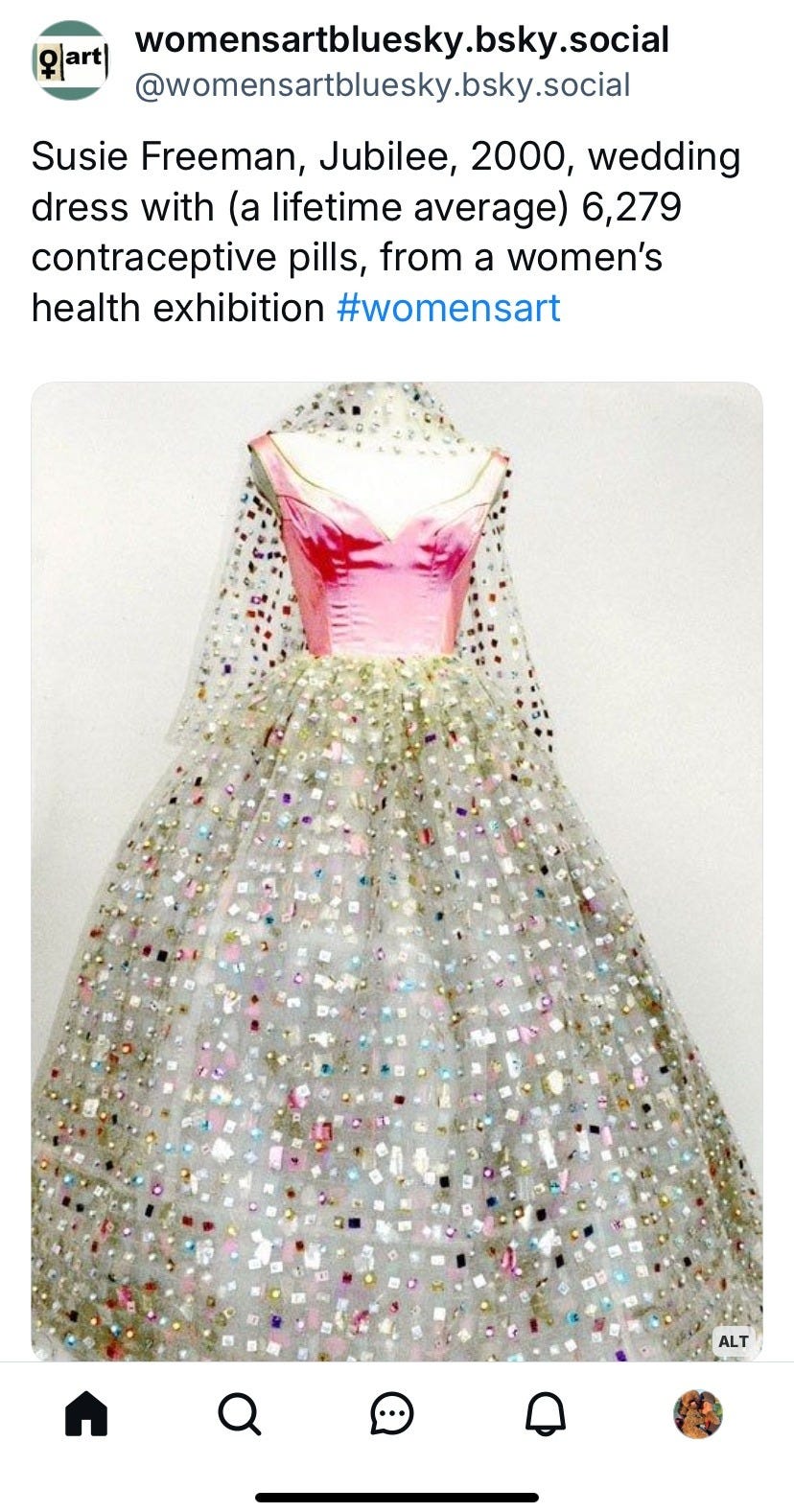
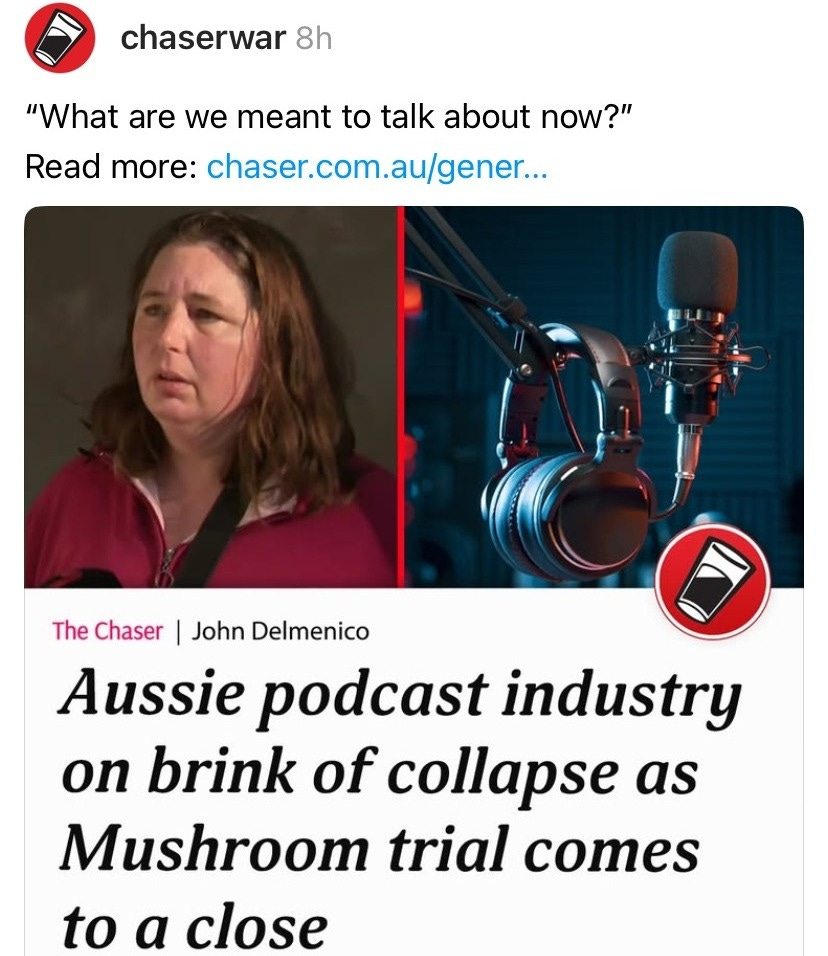
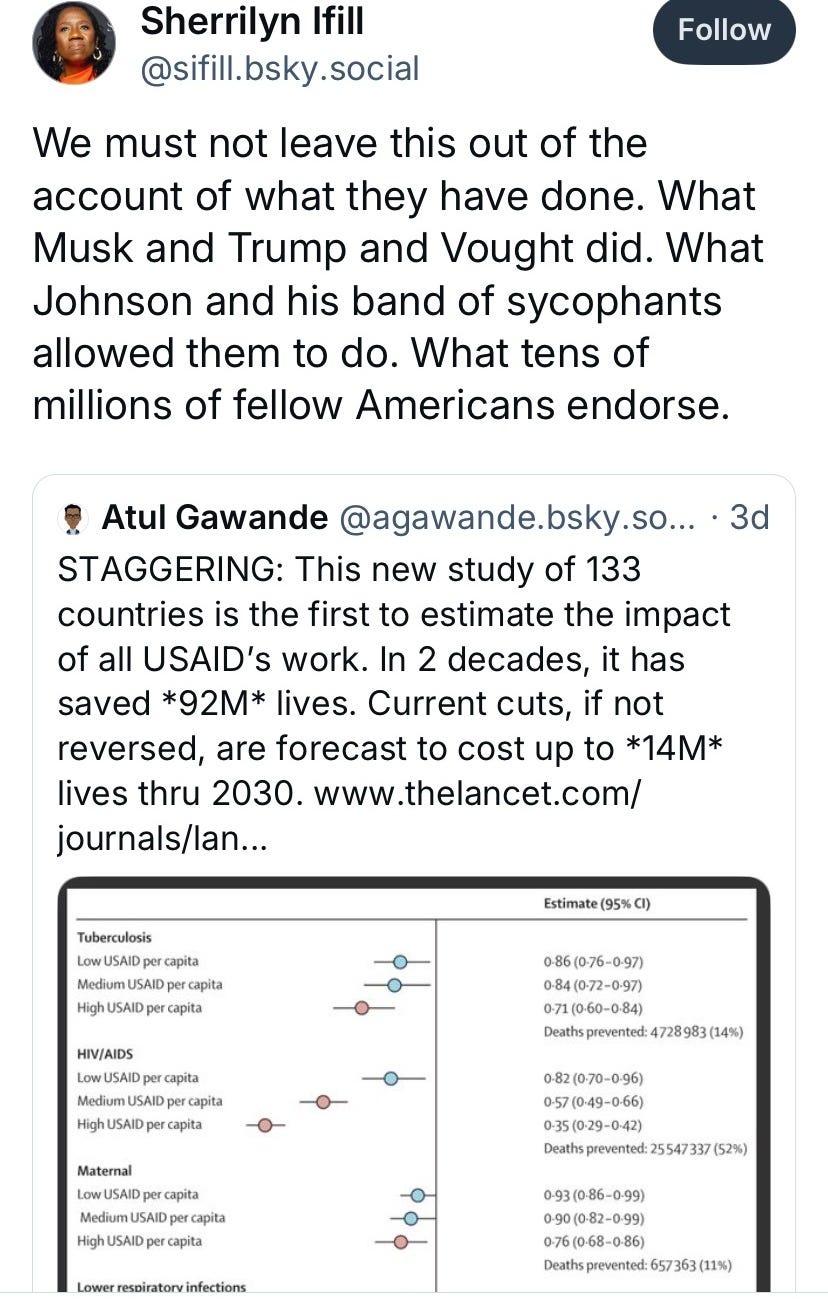
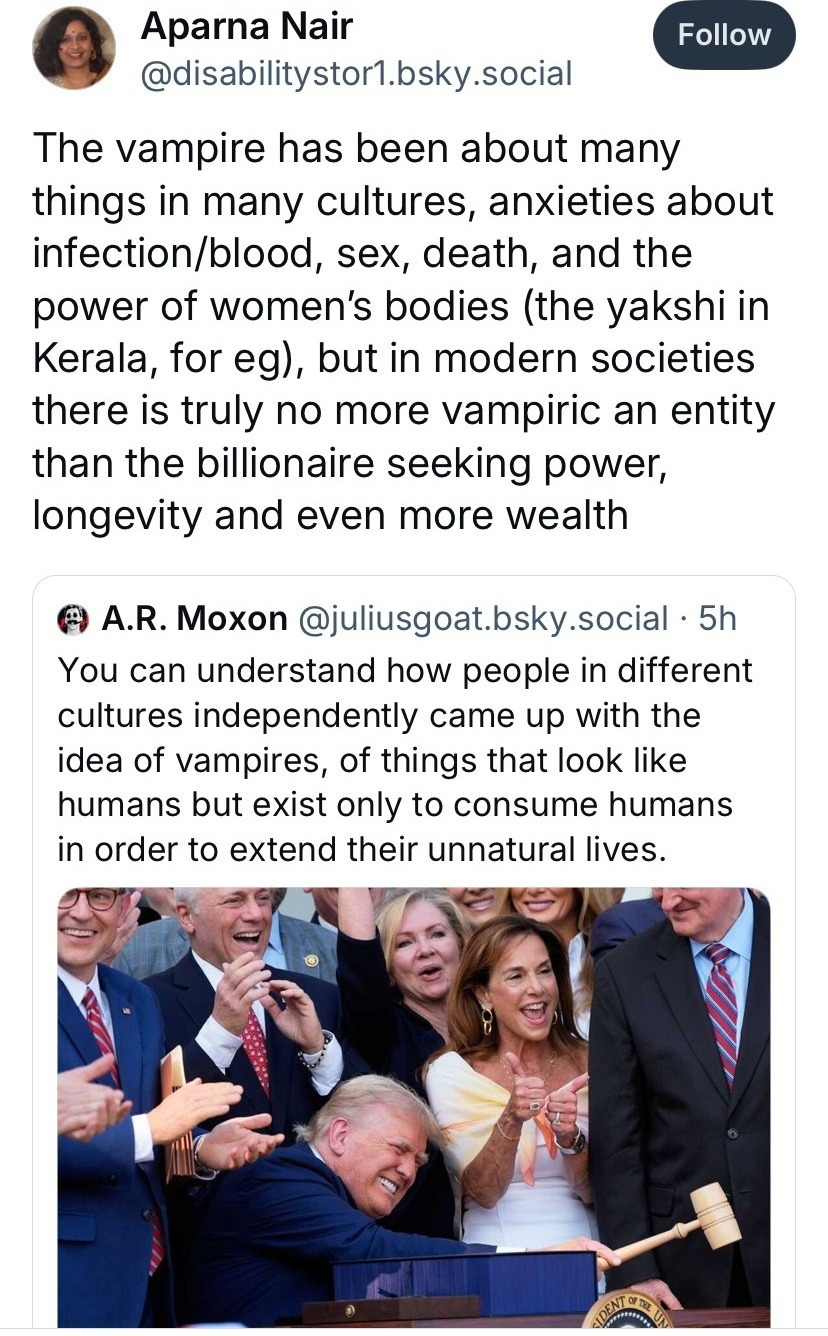
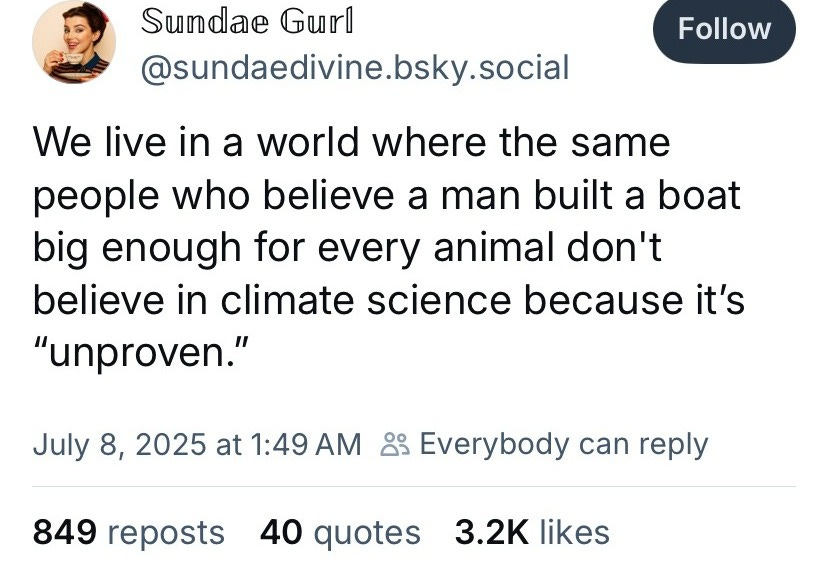
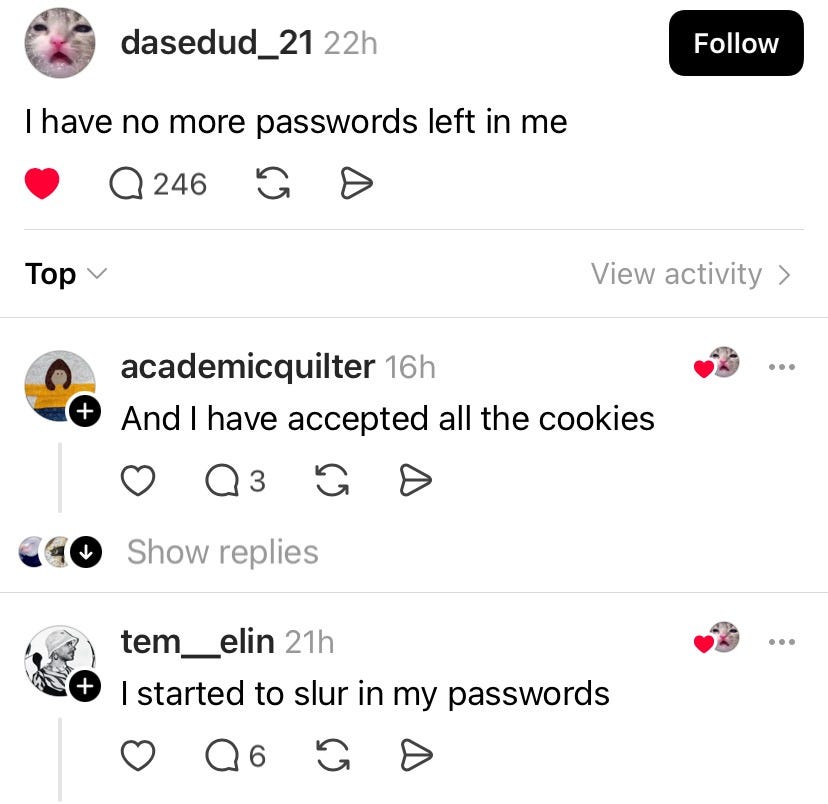



Excellent breakdown of this strange, bewildering case. But as your correspondent described his relationship. His ex partner was just being herself. It sounds so simplistic given the tragic outcomes of this case but maybe Erin Patterson was just being herself. Does that make it easier to understand why she did what she did? Not at all. We may never know. But maybe just being herself is an explanation. Sends chills down your spine though!
I have endured the consequences of severe personality disorders from three people throughout my life. Two of them manifested very similar vicious narcissistic behaviours and came from the same family. I am convinced therefore that genetics plays a major part. Other members of the family who were raised in exactly the same way, were luckier in the random gene selection.
These three people’s behaviours were terribly destructive for all those with whom they came into contact. It was impossible to understand how they could do such things to people with no regret or compassion. I have come to understand that they Simply lack empathy.
Their principal aim in life is self satisfaction. As long as this is achieved, collateral damage, in their reasoning, is to be expected. Why apologise for fulfilling an objective? They will never apologise.
My advice to anyone who becomes involved with such a narcissist is to escape now. They cannot change and you will continue to suffer. Unfortunately, in my case, I was unable to escape these narcissists and continue to suffer post traumatically.